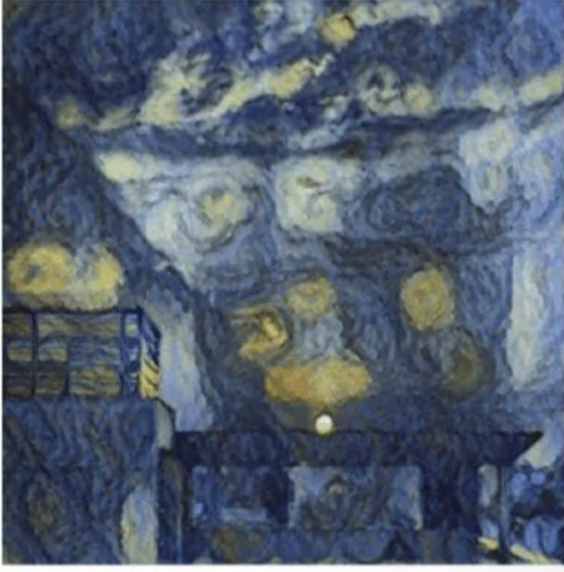In the most recent of three Copyright Review Board decisions regarding artificial intelligence (“AI”) works, the Board once again found that an artistic work generated by inputting the author’s photograph of a sunset and Van Gogh’s The Starry Night, into the RAGHAV AI Painting App, then selecting the intensity of a style filter did not constitute more than de minimis creative human expression, preventing the work from achieving copyright protection.

On December 1, 2021, Ankit Sahni sought registration from the Copyright Office in his work entitled SURYAST (“the Work”) and listed himself as the author of “photograph, 2-D artwork” and RAGHAV as the author of “2-D artwork,” with Mr. Sahni identified as the sole copyright claimant. In response to a request for more information on the AI used to create the work, Mr. Sahni explained that RAGHAV operates by taking two images—a “style image” and a “base image” to which the style will be applied—and a numerical value to indicate the amount or strength of the style transfer. The Board conceded Mr. Sahni’s “base photograph” is copyrightable, the question is whether the derivative “Starry Night-style” contains adequate copyrightable human creative expression.

When considering an application, the Office asks “[w]hether the ‘work’ is basically one of human authorship, with the computer or other device merely being an assisting instrument, or whether the traditional elements of authorship … (literary, artistic, or musical expression or elements of selection, arrangement, etc.) were actually conceived and executed not by man but by a machine.” Registration applications must disclose AI-generated content that is more than de minimis. If a work containing AI-generated material also contains sufficient human authorship to support a claim to copyright, then the Office will register the human’s contributions. Given these factors, the Office refused to register the Work because it contained insufficient human authorship, and Mr. Sahni’s contribution “cannot be distinguished or separated from the final work produced by the computer.”
Mr. Sahni ultimately submitted two requests for reconsideration. The Office denied the first request because the Work is a derivative digital adaptation of a photograph and because the new aspects of the Work were generated by RAGHAV, and not a human. On July 10, 2023, Mr. Sahni re-requested the Office to reconsider its determination, claiming his creative control resulted in the Work containing a sunset, clouds, the contours of a building, with the sky covering the upper two thirds of the work in the style of Van Gogh’s The Starry Night. The Board found that “the expressive elements … were not provided by Mr. Sahni.” Since Mr. Sahni merely provided three inputs to RAGHAV, the AI app was responsible for determining “how to interpolate the base and style images in accordance with the style transfer value.” Mr. Sahni did not control what elements would be placed where or the colors to be applied to them. Mr. Sahni’s selection of the style transfer strength numerical variable, alone, is insufficient for copyright protection.
Those seeking copyright protection over works that utilize AI should ensure that the human artist, not AI, controls the creative selection and arrangement elements of the work and that the human contribution of creative expression is more than de minimis while separately identifiable. However, because the Board stated that SURYAST is a derivative work, artists may be able to rely on copyright law’s protection of derivative works to prevent infringement of a derivative AI-generated artwork.
